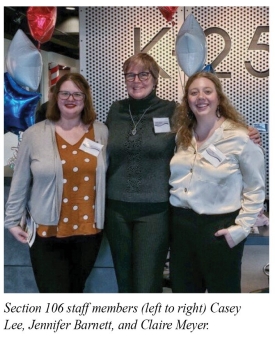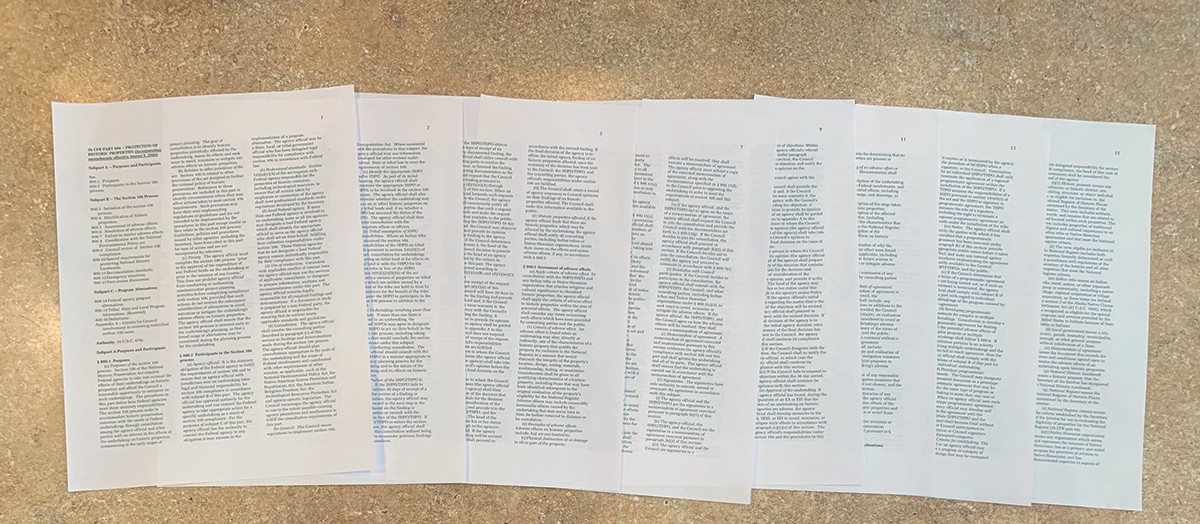A Considerable Community Tool

The Section 106 Review Process
By Claire Meyer
With passage of the National Historic Preservation Act (NHPA) in 1966, a partnership between the federal government and state, tribal, and local governments was established to support historic preservation activities.
The NHPA created the Advisory Council on Historic Preservation (ACHP), the first and only federal agency created solely to address historic preservation issues, and created a funding framework from the National Park Service to provide matching grants-in-aid from the Historic Preservation Fund (HPF) to State Historic Preservation Officers (SHPO), Tribal Historic Preservation Officers (THPO), and local governments certified for having qualified preservation programs (CLG).
Along with larger, overarching goals for preservation of historic resources in the United States, the Act also created the Section 106 review process. Section 106 of the NHPA requires federal agencies to consider the effects on historic properties of projects they carry out, assist, fund, permit, license, or approve throughout the country. If a federal or federally assisted project has the potential to affect historic properties, a Section 106 review will take place. The ACHP, interested parties, and the public may comment on projects before they start, making the Section 106 process a tool for citizens to participate in protecting a community’s historic properties.
Based in the Tennessee Historical Commission’s SHPO office, Section 106 staff, Casey Lee and Claire Meyer, along with Tennessee Division of Archaeology, Archaeology Supervisor, Jennifer Barnett, review and comment on any project in the state that has federal government involvement. Projects can be as simple as the FDIC licensing a new bank branch or complicated as TDOT and the Federal Highway Administration building a new bridge. Working with approximately 60 federal agencies, they review around 2,300 projects annually.
Now updating and digitizing resources, the department is developing a database for electronically logging Section 106 reviews completed by any state agency, a project aligned with the Governor’s goal to digitize resources and reduce paper record-keeping.

The Section 106 review process is laid out in eight single-spaced, double-sided pages of federal law.